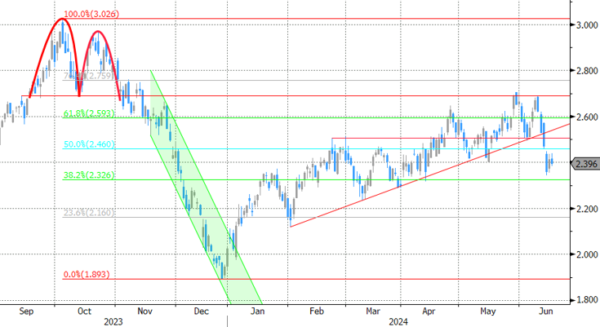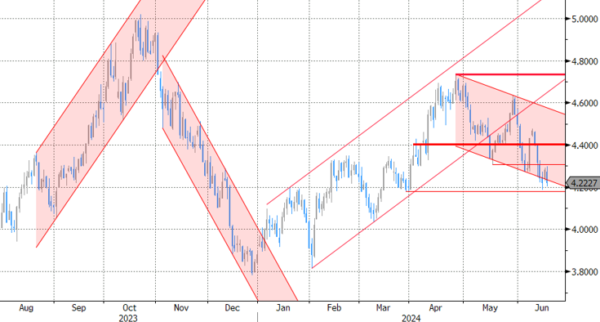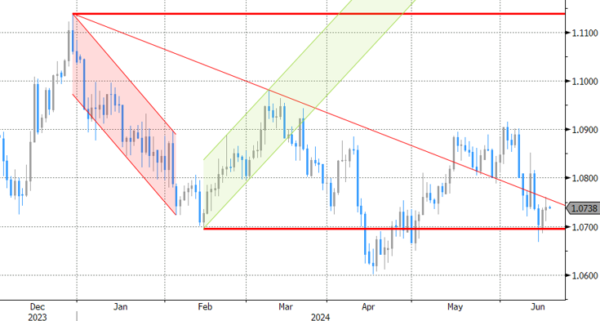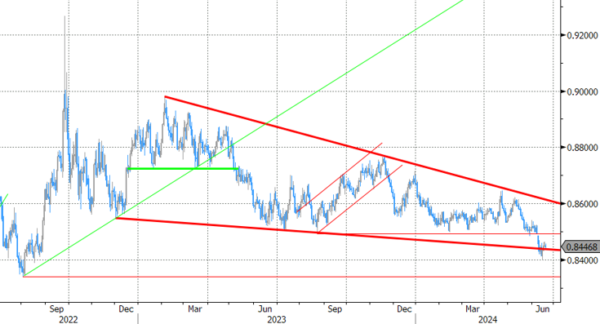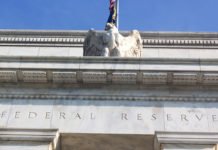Markets
Market focus shifted back to the US yesterday. After last week’s softer than expected price data, US retail sales for the second consecutive month suggested that consumer demand might be slowing. It could point to a better supply-demand balance that might help inflation to slow further. May headline sales only rose a meagre 0.1% M/M coming on the back of a (downwardly) revised 0.2% decline in April. Control group sales, seen as a proxy for private consumption in GDP calculations, rebounded 0.4% (vs 0.5% consensus), but this wasn’t enough to reverse last months -0.5% decline. After a limited rebound on Monday, US yields again ceded between 6 bps (5-y) and 5 bps (30-y). US yields across the curve are again closing in on the lows touched end last week (2-y 4.71%, 10-y 4.22%, 30-y 4.35%). Money markets discount two 25 bps rate cuts by the end of the year. A long line up of Fed governors (with individual nuances) reiterated they need more than one month of better inflation data to be confident to start an easing cycle. European/German bond yields early in the session tried to regain some ground after the recent safe have decline, but this was also reversed after the US data. German yields eased between 0.9 bps (5-y) and 2.3 bps (30-y). Some (temporary) calm also returned to intra-EMU bond markets The French 10-y yield spread (vs Germany) narrowed 2 bps (to 77 bps). A similar easing was seen for the likes of Greece (-4 bps), Italy (-3 bps), Spain and Portugal (-2 bps). European equities also tried to move away from last week’s lows (EuroStoxx 50 + 0.72%). The S&P 500 and the Nasdaq again finished at (marginally higher) closing record levels. The dollar after the US retail sales data reversed earlier intraday gains, but in the end any losses were limited (DXY close 105.26, EUR/USD 1.0740). USD/JPY even closed slightly stronger at 157.86.
US markets are closed today for the Junetheenth holiday and there are few data in EMU. Except for important news from the political scene in France, trading in European markets probably will be technical in nature. The EU commission is expected to open an excessive debt procedure against seven member states, including France. This comes as no surprise but won’t help to restore calm on intra-EMU (bonds) markets.
UK May CPI data were close to expectations this morning. Headline CPI eased to 0.3% M/M bringing the Y/Y measure exactly at the 2% BoE target. Core inflation also, as expected, eased to 3.5% from 3.9%. Still the decline in services inflation (5.7% from 5.9%) was less than hoped for. Even as the inflation target for the headline figure has been reached, underlying data suggested that the BoE still has work to do to bring inflation back under control in a sustainable way. This suggests balanced communication at tomorrow’s BoE policy meeting. In a first reaction, sterling tentatively gains a few ticks (EUR/GBP 0.8446).
News & Views
The US’ Congressional Budget Office jacked up its deficit forecast for the running fiscal year (through September) by about 27% to a whopping $1.92tn, or 6.7% of GDP. Doing so the nonpartisan budget watchdog no longer expects the deficit to shrink compared to last FY ($1.69tn, 6.3% of GDP). The new estimate is some $400 bn higher than February’s and reflects additional spending for Ukraine, the Biden administration student-loan relief plans as well as an increase in estimated Medicaid spending. In the updated 10 year outlook, the CBO is projecting deficits equal or in excess of 5.5%. “Since at least 1930, deficits have not remained that large for more than five years in a row.”, the CBO said in an umpteenth warning to the unsustainable fiscal situation. The new economic forecasts assume faster growth (2%) and inflation (2.7% vs 2.1% in the February forecast), leading the CBO to be more cautious on Fed rate cuts. They now expect a first move to happen in 2025Q1 vs mid-2024 previously.
Japan’s Ministry of Finance is considering a shift towards issuing bonds with shorter maturities, Bloomberg reported this morning based on draft proposal. It would mean a major policy shift from the past where the ministry tended to extend the maturity of debt, locking in the extremely low (and negative) rates for as long as possible. The proposal comes after the BoJ recently abandoned its yield curve programme, raised its policy rate out of negative territory and is planning to cut bond purchases from the current JPY 6tn per month. Yields across the spectrum have risen, especially at the long end of the curve as a result.
Graphs
GE 10y yield
The ECB cut its key policy rates by 25 bps at the June policy meeting. A more bumpy inflation path in H2 2024, the EMU economy gradually regaining traction and the Fed’s higher for longer US strategy make follow-up moves difficult. Markets are coming to terms with that. For the time being, though, the political narrative dominates. After hitting a new YtD top at 2.7%, the German 10-yr yield corrected lower on safe haven bids.
US 10y yield
The Fed is seeking more evidence than just one slower-than-expected (May) CPI is providing. Upgraded inflation forecasts and a higher neutral rate complicate the exact timing of a first cut further. June dots suggest one move in 2024 followed by four more next year. Markets are positioned more aggressively, turning the recent low in yields into a technical support zone. The US 10-y yield is testing the downside of the 4.2/4.7% trading range.
EUR/USD
EUR/USD is trapped in the 1.06-1.09 range. The desynchronized rate cut cycle with the ECB exceptionally taking the lead, strong US May payrolls and a swing to the right in European elections pulled the pair away from 1.09 resistance. The Fed meeting balanced the weaker than expected US CPI outcome. Euro fragility makes a return to the 1.06 downside more likely than not.
EUR/GBP
Debate at the Bank of England is focused at the timing of rate cuts. Slower than expected April disinflation and a surprise general election on July 4 suggest that a June cut in line with the ECB looks improbable. Sterling gained momentum with money markets now discounting a Fed-like scenario. EUR/GBP tested the 2023 & 2024 lows near 0.85. Euro weakness eventually pulled the trick after French president Macron called snap elections following a weak showing in EU elections.




